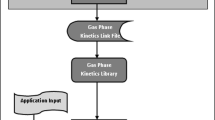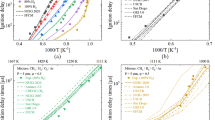Abstract
In a non-premixed flame mode of combustion, the fuel and oxidizer react. It began to mix very immediately. The flow rate had slowed due to the mixing. For such modes of combustion, the combustion system’s high turbulence shear layer has been chosen to encourage mixing. ANSYS was used to do the numerical analysis for the parameters mentioned above. By aiding in the air whirling can impact combustor performance by affecting the fuel–air mixing process and creating a recirculation zone that can function as a flame holder. RSM turbulence models were employed in this study. It has been proven to be reliable in this type of study. The numerical data had been backed up by the available experimental results. Carbon dioxide can impact Hydrogen has unique combustion characteristics as compared to hydrocarbons, such as well as a broad flammability range, a low minimum ignition energy, and a fast flame speed. At AFR 50, hydrogen and carbon dioxide were diluted from 0 to 50% hydrogen and carbon dioxide. Investigate thermal emission with this numerical set-up. It has been expanded to include thermal emission at AFR 50 for carbon dioxide and hydrogen dilution, as well as a PPM emission contour.
Access this chapter
Tax calculation will be finalised at checkout
Purchases are for personal use only
Similar content being viewed by others
Abbreviations
- AFR:
-
Air to Fuel Ratio
- CTRZ:
-
Central Toroidal Recirculation Zone
- PDF:
-
Probability Density Function
- \(\theta\) :
-
Equivalence ratio
- f :
-
Mixture fraction
- R:
-
Radius
- SN:
-
Swirl number
References
Zhen HS, Leung CW, Cheung CS (2010) Thermal and emission characteristics of a turbulent swirling inverse diffusion flame. Int J Heat Mass Transf 53(5–6):902–909
Barakat H, Kamal M, Saad H, Eldeeb W (2015) Performance enhancement of inverse diffusion flame burners with distributed ports. Proc Inst Mech Eng Part J Power Energy 229(2):160–175
Chong CT, Ng JH, Aris MS, Mong GR, Shahril N, Ting ST, Zulkifli MF (2019) Impact of gas composition variations on flame blowout and spectroscopic characteristics of lean premixed swirl flames. Process Saf Environ Prot 128:1–13
Kumaran K, Shet USP (2007) Effect of swirl on lean flame limits of pilot-stabilized open premixed turbulent flames. Combust Flame 151:391–395
Chan YL, Zhu MM, Zhang ZZ, Liu PF, Zhang DK (2015) The effect of CO2 dilution on the laminar burning velocity of premixed methane/air flames. Energy Procedia 75:3048–3053
Rajpara P, Shah R, Banerjee J (2018) Effect of hydrogen addition on combustion and emission characteristics of methane fuelled upward swirl can combustor. Int J Hydrogen Energy 43(36):17505–17519
Soloklou MN, Golneshan AA (2020) Effect of CO2 diluent on the formation of pollutant Knox in the laminar non-premixed methane-air flame. Int J Heat Mass Transfer 148:119071
Erete JI, Hughes KJ, Ma L, Fairweather M, Pourkashanian M, Williams A (2017) Effect of CO2 dilution on the structure and emissions from turbulent, non-premixed methane–air jet flames. J Energy Inst 90(2):191–200
Khalil AEE, Gupta AK (2015) Toward ultra-low emission distributed combustion with fuel air dilution. Appl Energy 148(x):187–195
Tripathi G, Sharma P, Dhar A (2020) Effect of methane augmentations on engine performance and emissions. Alex Eng J 59(1):429–439
Acknowledgements
We thank Mr. Piyush Savaj for his help during this work. This work was supported by the S. V. National Institute of Technology Surat [Grant Code No. 2020-21/Seed Money/13].
Author information
Authors and Affiliations
Corresponding author
Editor information
Editors and Affiliations
Rights and permissions
Copyright information
© 2023 The Author(s), under exclusive license to Springer Nature Singapore Pte Ltd.
About this chapter
Cite this chapter
Kadia, K., Baraiya, N.A., Shah, R.D. (2023). Effect of Dilution on Emission from Methane Combustion. In: Mehta, H.B., Rathod, M.K., Abiev, R., Arıcı, M. (eds) Recent Advances in Thermal Sciences and Engineering. Lecture Notes in Mechanical Engineering. Springer, Singapore. https://doi.org/10.1007/978-981-19-7214-0_38
Download citation
DOI: https://doi.org/10.1007/978-981-19-7214-0_38
Published:
Publisher Name: Springer, Singapore
Print ISBN: 978-981-19-7213-3
Online ISBN: 978-981-19-7214-0
eBook Packages: EngineeringEngineering (R0)




